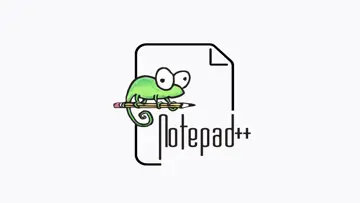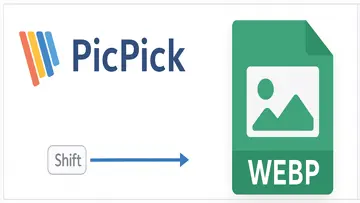1.2.0 Safe to install
CLIP: Your Creative Coding Companion
CLIP by Uri Hnykin empowers developers and artists to seamlessly integrate code and creativity, enhancing workflows with intuitive design and innovative features.
CLIP by Uri Hnykin
CLIP by Uri Hnykin is a powerful software application designed for creative professionals looking to enhance their workflow. This cutting-edge tool offers a wide range of features that make it a must-have for graphic designers, photographers, and other creative individuals.
Key Features:
- Smart Object Recognition: CLIP utilizes advanced algorithms to recognize objects in images, making it easier to edit and manipulate specific elements.
- Image Annotation: Users can easily annotate images with notes, comments, and suggestions to streamline collaboration processes.
- Customizable Templates: The software comes with a variety of pre-designed templates that can be customized to suit individual preferences and branding requirements.
- Multi-Platform Compatibility: CLIP is compatible with both Mac and Windows operating systems, ensuring accessibility for a wide range of users.
- Cloud Storage Integration: Users can seamlessly integrate their cloud storage accounts with the software, allowing for easy access to files and projects from anywhere.
Benefits of Using CLIP:
- Enhanced Workflow Efficiency: By streamlining editing processes and offering smart features, CLIP helps users save time and complete projects more efficiently.
- Improved Collaboration: The image annotation feature facilitates better communication between team members, leading to smoother collaboration on projects.
- Professional Results: With customizable templates and advanced editing tools, users can achieve professional-quality results without extensive training or experience.
- Cross-Platform Functionality: The ability to work on both Mac and Windows systems ensures seamless integration into diverse work environments.
Overall Impressions:
CLIP by Uri Hnykin is a comprehensive software solution for creative professionals seeking to elevate their work to the next level. With its smart object recognition, image annotation capabilities, and customizable templates, this tool is designed to enhance workflow efficiency and deliver professional results. Its multi-platform compatibility and cloud storage integration further add to its appeal, making it a versatile choice for a wide range of users. Whether you are a graphic designer, photographer, or creative professional, CLIP is worth considering to streamline your editing process and achieve outstanding results.
Overview
CLIP is a Open Source software in the category Business developed by Uri Hnykin.
The users of our client application UpdateStar have checked CLIP for updates 157 times during the last month.
The latest version of CLIP is 1.2.0, released on 02/18/2008. It was initially added to our database on 08/24/2007.
CLIP runs on the following operating systems: Android/iOS.
CLIP has not been rated by our users yet.
Pros
- CLIP offers a user-friendly interface that is easy to navigate.
- The software provides a wide range of functionality for creating and editing text, including formatting options and the ability to add images and links.
- CLIP allows for collaboration with multiple users in real-time on the same document.
- It supports various file formats for importing and exporting documents, making it versatile for different needs.
- The software offers robust security features to protect sensitive information.
Cons
- There may be some limitations in terms of advanced formatting options compared to other more specialized text editing software.
- It may not offer as many advanced features or integrations as some other more established text editing tools on the market.
- As a newer software, there may be occasional bugs or glitches that need to be addressed through updates.
- It may lack customization options or advanced automation features that are available in other text editing tools.
FAQ
What is CLIP by Uri Hnykin?
CLIP (Contrastive Language Image Pre-training) is a neural network model created by OpenAI researcher Uri Hnykin. It uses a combination of natural language processing (NLP) and computer vision techniques to understand images and generate natural language descriptions of them.
What makes CLIP different from other image recognition models?
Unlike other image recognition models, CLIP doesn't rely on labeled training data to recognize images. Instead, it learns to associate words and images through unsupervised learning. This means it can recognize a wider variety of objects and concepts and doesn't require as much human annotation to train.
What are some potential applications of CLIP?
CLIP has a wide range of potential applications, including image search, content moderation, and stock photography tagging. It could also be used in fields like healthcare and robotics, where accurate image recognition is crucial.
How well does CLIP perform compared to other models?
CLIP has achieved state-of-the-art performance on several benchmarks, including the COCO object detection dataset and the ImageNet classification dataset. It has also been shown to outperform previous models on tasks like zero-shot learning and few-shot learning.
How was CLIP trained?
CLIP was trained on a massive dataset of images and text using a variant of the transformer architecture called a Vision Transformer (ViT). The training process involved pre-training the language and vision portions separately before fine-tuning them on a joint task.
Is CLIP open source?
Yes, the code for training and using CLIP is open source and available on GitHub. However, the pre-trained models are currently not publicly available.
What are the ethical concerns surrounding CLIP and similar models?
One concern is that such models can amplify existing biases in society, such as underrepresentation of certain groups in visual media. There is also the potential for misuse, such as the creation of deepfakes or other forms of malicious content.
What is the future of CLIP and similar models?
The future looks promising for models like CLIP, as they continue to push the boundaries of what's possible in computer vision and natural language processing. As they become more widespread, it will be important to address ethical concerns and develop safeguards to prevent misuse.
Who can benefit from using CLIP?
CLIP can benefit a wide range of individuals and organizations, including businesses in image-heavy industries like marketing or e-commerce, researchers in fields like computer vision or natural language processing, and anyone looking to improve their image recognition capabilities.
How can I learn more about CLIP?
There are several resources available online for learning more about CLIP, including research papers by Uri Hnykin and others, tutorials on websites like GitHub, and online communities devoted to machine learning and artificial intelligence.

David Fischer
I am a technology writer for UpdateStar, covering software, security, and privacy as well as research and innovation in information security. I worked as an editor for German computer magazines for more than a decade before joining the UpdateStar team. With over a decade of editorial experience in the tech industry, I bring a wealth of knowledge and expertise to my current role at UpdateStar. At UpdateStar, I focus on the critical areas of software, security, and privacy, ensuring our readers stay informed about the latest developments and best practices.
Latest Reviews by David Fischer
Installations
Related
AI Notes AI Writing Assistant
AI Notes is a note-taking application that incorporates advanced AI technology to elevate your productivity and creativity when drafting content for popular social media platforms such as Facebook, Twitter, Instagram, and TikTok.ArcGIS Earth
Unlock the Power of Geospatial Data with ArcGIS EarthBanjeCel
BANJECEL With Banjecel, managing your banking operations is always easier! With the new version of BanjeCel, you will be able to perform your operations in a simpler and faster way, with a more intuitive navigation and the information …BeyondTrust Access Console
The Beyondtrust Mobile Access Console for iOS enables Information and Security teams to remotely access critical endpoints, securely allow entry to systems, and oversee access sessions via the BeyondTrust Secure Remote Access Appliance.Cryptomator
Secure Your Cloud Storage with CryptomatorCtfile
Efficient File Management with CtfileLatest Reviews
|
|
AntiRansomware
Protect your files with AntiRansomware by Abelssoft |
|
|
Quick CPU
Optimize Your CPU Performance with Quick CPU |
|
|
Taskbarify
Boost Your Productivity With Taskbarify! |
|
|
UltraStar Deluxe
Sing Your Heart Out with UltraStar Deluxe! |
|
|
DVR-Studio HD
DVR-Studio HD: A Comprehensive Solution for Media Management |
|
|
MetaX for Windows
MetaX for Windows: The Ultimate Tagging Tool for Video Metadata |
|
|
UpdateStar Premium Edition
Keeping Your Software Updated Has Never Been Easier with UpdateStar Premium Edition! |
|
|
Microsoft Visual C++ 2015 Redistributable Package
Boost your system performance with Microsoft Visual C++ 2015 Redistributable Package! |
|
|
Microsoft Edge
A New Standard in Web Browsing |
|
|
Google Chrome
Fast and Versatile Web Browser |
|
|
Microsoft Visual C++ 2010 Redistributable
Essential Component for Running Visual C++ Applications |
|
|
Microsoft Update Health Tools
Microsoft Update Health Tools: Ensure Your System is Always Up-to-Date! |









